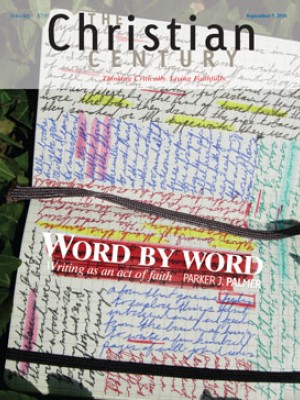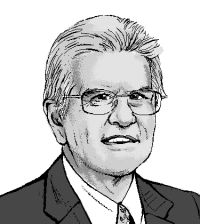Church growth, Korean style
When the World Missionary Conference gathered in Edinburgh in 1910, it would have taken real optimism to identify Korea as a prospect for major Christian growth. At that point, Christians made up perhaps 1 percent of the Korean people, and the nation was under the heavy-handed occupation of Japanese authorities, who looked dimly on Western cultural intrusions.
Through the 20th century, though, Christian growth in Korea has been astonishing. At least 30 percent of South Korea's 50 million people are Christians. Some of Seoul's spectacular megachurches regularly appear in listings of the world's largest congregations; they are virtually denominations in their own right. The best known is the (Pentecostal) Yoido Full Gospel Church, which claims 850,000 members.
Read our latest issue or browse back issues.
The Myung Sung Presbyterian Church is the world's largest congregation in that tradition. Korea has more Presbyterians than the U.S. does. After the U.S., South Korea is the world's largest supplier of Christian missionaries. This Christian activity developed in one of the world's industrial and financial powerhouses, with huge media assets. When future scholars write the history of modern Christianity, the Korean story will demand attention.
Just how did it all happen? It would be pleasant to suggest that Christian leaders, informed by prophetic inspiration, made a series of brilliant strategic decisions that won over the country. Some churches did make excellent use of the opportunities available to them. Yet fallible human beings also made their fair share of horrible blunders. The great Korean spokesperson at the Edinburgh conference was the aristocratic Yun Ch'iho, who played a critical role in importing Protestant Christianity into Korea but whose reputation was ultimately blighted by his later collaboration with the Japanese. Modern-day churches have also faced a number of scandals.
But Christians had some advantages. Above all, they could begin with a blank slate in a nation with minimal exposure to the faith before the 18th century. Christians therefore had no burden of history or prejudice to overcome and were able to establish their credentials among the Korean people. From the earliest days, Christians associated themselves wholeheartedly with the cause of the nation and people, in an age when thuggish Japanese imperialists were seeking to destroy that identity. Europeans might draw comparisons to the role of Catholicism as the symbol of national resistance in Ireland and Poland. When activists signed a Korean Declaration of Independence in 1919, almost half were Christian, though at that time Christians were just 1 percent of the population.
Korea is a nation cursed by having too much history and too many conflicts and disasters—yet each crisis served to strengthen the force of Christianity on the peninsula. Prior to the 1940s, the city of Pyongyang was a great Christian center. In the face of communist persecution, hundreds of thousands fled to the south, where over time they greatly flourished. The Korean War itself contributed to the Christian cause, as the churches were principal channels of relief efforts. Christians, it seemed, were not only loyal patriots but generous supporters of the poor and oppressed. Being Christian in no way compromised a hard-won national identity.
Despite having won such favorable opinion, Christians remained few in number as late as 1960. Expansion came only during the great urban and industrial growth of the 1970s and 1980s. Once again, Christian churches were able to offer aid and security to people uprooted by rapid social change and by the decline of traditional communities. When it was founded in 1958, the Yoido Full Gospel Church was just a couple of extended families; by 1977, it had 50,000 members.
The churches also benefited from the long decades in which the nation was ruled by corrupt military cliques, which provided a glaring contrast to the integrity and zeal of churches. In the 1970s, Christian theologians pioneered the enormously influential doctrines of minjung thought, the local manifestation of liberation theology, which condemned dictatorship and exploitation. The Roman Catholic Church especially earned praise as the outspoken advocate of human rights and democracy, and its numbers soared.
In retrospect, the decisive year of this contest occurred in 1980, when soldiers slaughtered thousands of democracy protesters in the city of Kwangju. This high-water mark of repression coincided exactly with the greatest expansion of the churches. In 1998, Catholic activist Kim Dae-Jung won the presidency and ended authoritarian rule. Many observers compare him to Nelson Mandela.
The rise of Korean Christianity is a complex matter, but if we ask what the churches did right, the answer would be almost painfully simple: Christians stood up against oppression and injustice, risking their lives in the process, and they offered ordinary people a vision of a better life.







